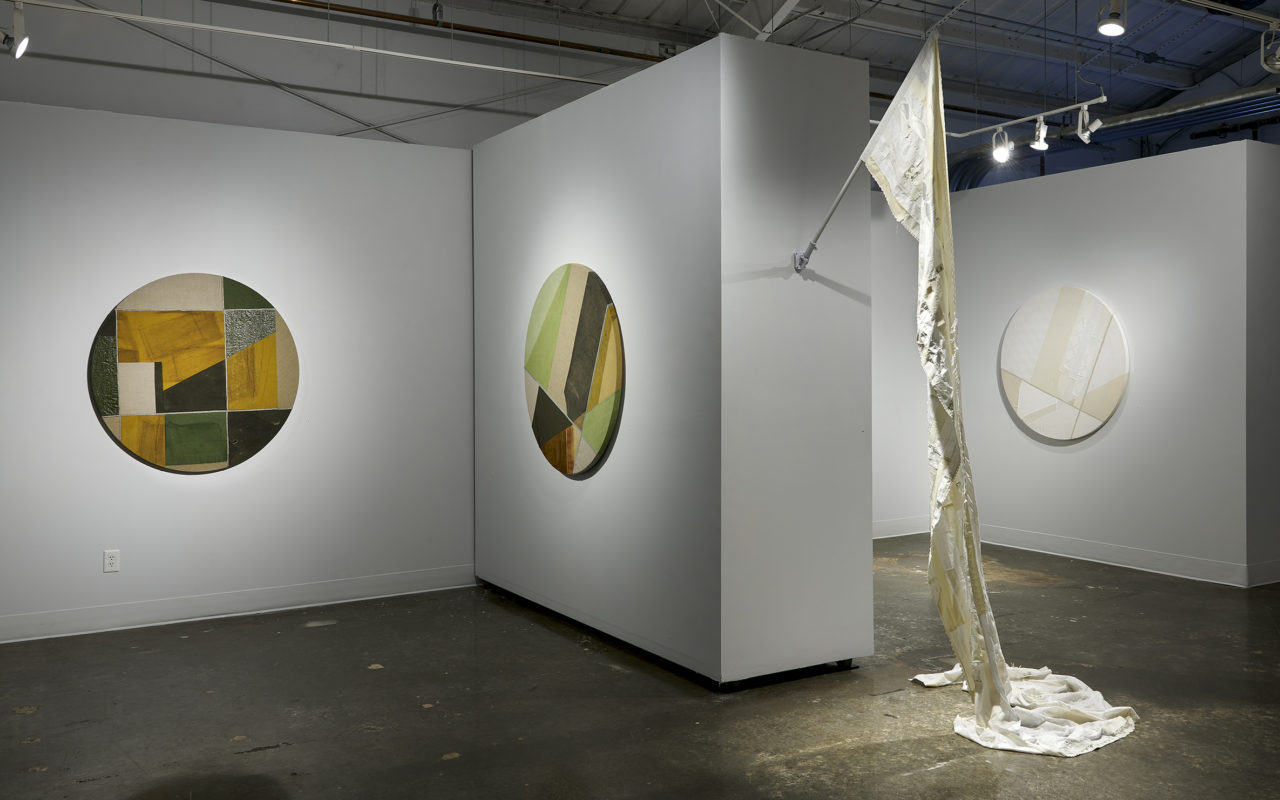
Comes the Fall
BR Goldstein is a Canadian artist who makes her home in Durham N.C. Primarily a painter, in recent years Goldstein has focused on distilling her visual language to as few gestures as possible to produce formalist works of geometric abstraction using textiles as a base. Comes the Fall is a collection of textile compositions created between 2020-2022 that highlight injustice as manifested in landscape and the contribution of capitalist production to the destruction of the environment. Often historically reduced to picturesque renderings, the landscape referenced in Comes the Fall encompasses elements beyond the scenic to include impositions caused by industry, poverty, and colonialism.
In the earlier works from this series Goldstein limits her materials to low quality, often repurposed industrial textiles in their unaltered states. In our everyday lives, such discarded or abandoned objects, the detritus of consumerism, become buried from consciousness as they are stored or disposed of out of sight. The materials referenced in these works were manufactured for single use and yet often find their way to providing long term shelter for those unhoused and displaced by systems of neglect. The low quality materials used in these works create changes in tension across each piece, distorting the original geometry of the composition. The seams create contrasting qualities of line, of borders, of contaminant. Irregularities and asymmetries in the found materials have been intentionally unaltered to reference systemic erosions.
The most recent work exhibited in Comes the Fall uses satellite imagery of rural landscapes that reveal the land divisions made under the French Seigneurial system and English Dominion Lands Act, as the country was colonized. Goldstein has created sewn replicas of landscapes in Canada—effectively reproducing the artificial division of Indigenous lands by French and English settlers in the provinces of Quebec, Ontario, and Manitoba. Here, Goldstein has begun to include hand-dyed fabrics along with industrial textiles from her collection of found materials.
Landscape contains layers of histories that have soaked into the earth. These layers become visible when looking at what dominant cultures have deemed disposable or unworthy of consideration: materials, people, inadequate shelter, inadequate solutions. Comes the Fall holds many oppositional ideas in the same space: craft and art, wounding and healing, oppression and resistance through work that evokes fragility, tension, inequality, and labor.
